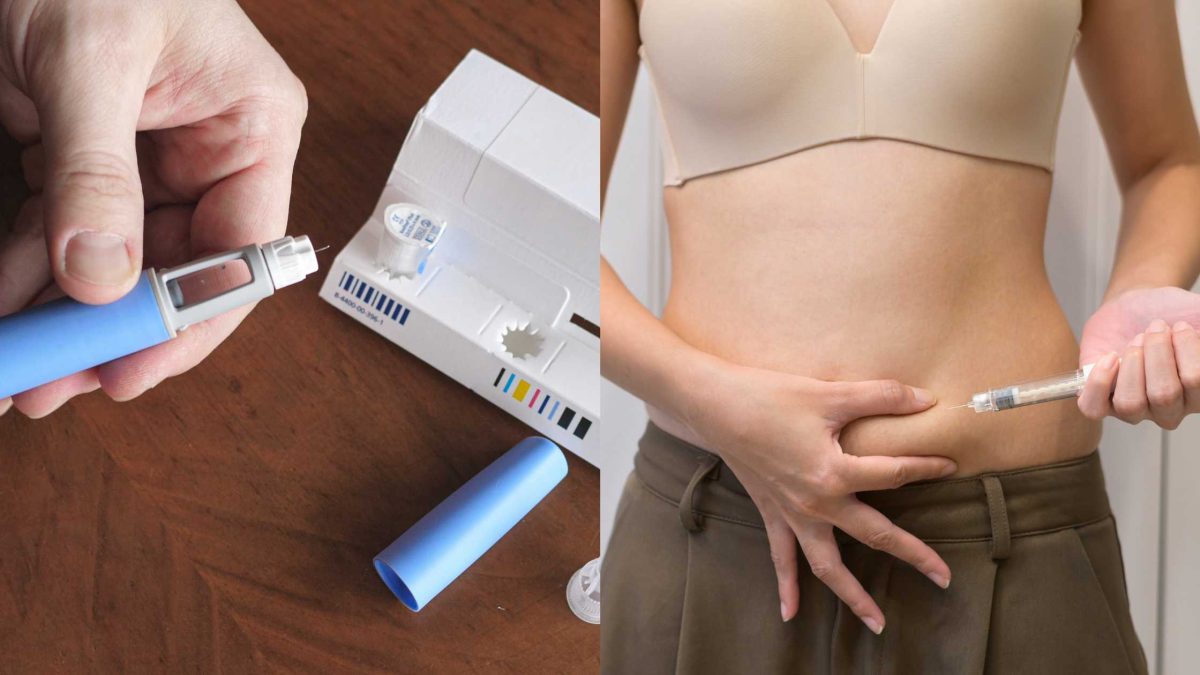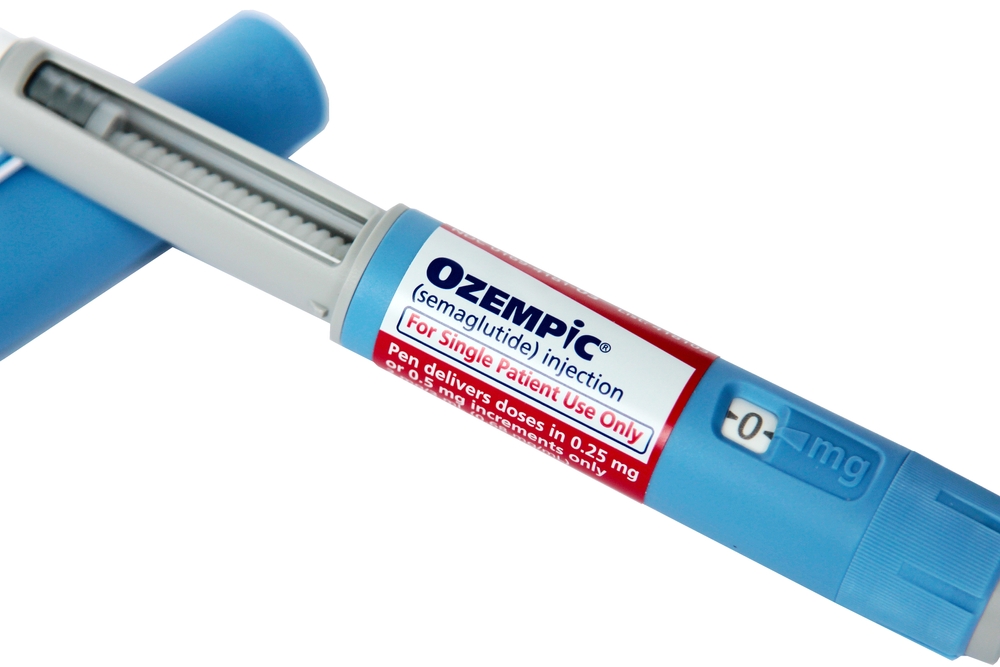Key Takeaways
-
FUPA stands for fat upper pubic area and is the fatty region above your pubic bone that can become saggy and more prominent after rapid weight loss or large weight fluctuations, impacting body image for individuals of any gender.
-
Weight loss shots eliminate total body fat by targeting appetite or metabolism but cannot spot-treat the FUPA. Whether there’s a visible change depends on how much fat is lost and the skin’s elasticity.
-
Treatment should be commensurate with FUPA severity and goals, with options ranging from non-surgical fat reduction and energy-based skin tightening to minimally invasive procedures and surgical lifts for the most dramatic contouring.
-
Skin quality and collagen make a big difference in results, so evaluate your elasticity prior to selecting treatment and support collagen with supplements or skin-tightening treatments when there is laxity.
-
Pair these clinically backed fat busting treatments with lifestyle steps, such as a healthy diet, regular exercise that engages the core and pelvic floor, and good hydration, to fuel fat loss and continue to preserve results.
-
Set reasonable expectations by talking timelines, recovery, risks, and probable results with a specialist. Record changes with photos and measurements to inform decisions.
Treating fupa after weight loss shots refers to the process of dealing with excess lower abdominal fat and loose skin that can linger even after you lose weight quickly.
Your options range from targeted exercise to noninvasive treatments like radiofrequency or cryolipolysis to surgical options like mini tummy tuck and liposuction.
Recovery time, price, and skin elasticity play a role in results. Consulting a board-certified provider helps align method to goals and health status before beginning any procedure or program.
Understanding FUPA
FUPA, short for Fat Upper Pubic Area or Fatty Upper Pubic Area, refers to the localized fat pad that sits above the pubic bone and often shows as a bulge in the lower abdomen. Medically, related fatty tissue in the lower abdomen beneath the navel is referred to as the panniculus or pannus. This section explains what FUPA is, why it may become more noticeable after weight loss shots, and which body systems and factors shape its appearance.
Anatomy
FUPA consists of subcutaneous fat, skin, and connective tissue over the pubic area. It rests near the lower stomach, the mons pubis, and the genitals, so transformations here impact the appearance of the entire lower torso.
The abdominal muscles and pelvic floor nestle underneath these layers, and when those muscles are lax or separated, the soft tissue above them can pop out in a more pronounced way. Fat tends to store in genetic-based preferred areas and in locations of previous weight history, and loosened abdominal walls or stretched skin from weight gain makes the bulge more apparent after the weight is lost.
For instance, a person may lose 15 to 20 kg and still have a jiggly mound over the pubic bone as skin and connective tissue do not retract.
Causes
-
Whip-lash weight loss or significant weight fluctuations cause loose skin and leftover fat in the FUPA region.
-
Bad eating habits and a lack of exercise encourage fat storage in the lower belly and pubic area.
-
Pregnancy and surgery like c-section alter tissue and fat distribution.
-
Genetic predisposition to store fat in the lower torso.
-
Aging-related skin laxity and reduced collagen support.
Weight loss will decrease overall FUPA size as total body fat decreases. Spot reduction is impossible without targeted treatments or surgery. High-waisted or flared pants can conceal the region and make you feel better while you’re thinking of more long-term strategies.
Hormones
Hormones determine where fat is stored. Changes in estrogen at puberty, menopause or with hormone therapy can redirect fat to the lower belly and pubic area. Elevated cortisol due to prolonged stress has a tendency to increase abdominal and pubic fat storage, causing FUPA to become more pronounced.
Thyroid dysfunction and testosterone fluctuations modify your fat distribution overall and can affect FUPA prominence. Hormone replacement or natural hormonal shifts should be considered when FUPA develops or exacerbates, as addressing the hormonal trigger may assist in diminishing buildup over time.
Extra flab here can be painful when you’re working out or wearing fitted clothes, making you less confident and physically uncomfortable.
Weight Loss Injections
Weight loss injections are medications or fat dissolvers designed to shed general body fat and, in some situations, to address targeted fat areas such as the upper pubic region, aka the FUPA. These injections can act by affecting your appetite, metabolism, or dissolving fat cells directly. They aren’t magic bullets.
Most protocols combine injections with diet and exercise to generate and maintain a calorie deficit. It can be swifter than lifestyle change alone but often requires multiple treatments, and each person’s results are different.
Mechanism
As an example, appetite suppressing weight loss injections work by affecting hormones that control hunger and satiety like GLP‑1, which slows down gastric emptying and decreases caloric consumption. Other injections seek to alter metabolic signaling, increase insulin sensitivity and help the body tap into stored fat as fuel, promoting whole-body fat loss, not one spot.
Fat-dissolving injections have ingredients that wreck fat cell membranes. Once metabolized, the lipid contents are processed by the lymphatic system and liver and then excreted. This is how treated fat pads can shrivel up without surgery and why.
Some patients demonstrate slow shrinkage over weeks as the body clears the wreckage. Repeat sessions weeks apart can be necessary to achieve the desired contour. Nor do the hormonal and fat-lysis pathways pick the pubic area. They reduce fat tissue globally or regionally only at the site of injection.
Better insulin sensitivity can facilitate fat loss in general, but it doesn’t get rid of subcutaneous flab in the FUPA specifically.
Limitations
Injections can’t trustworthily spot-reduce fat. Even fat-dissolving injections must be administered carefully, and their impact is confined to the injected area and to how the body redistributes fat following weight loss. For most individuals, persistent fat pockets or lax skin continue to linger following general weight loss.
Individual anatomy matters: skin elasticity, thickness of subcutaneous fat, and prior weight history change outcomes. Others will experience significant FUPA shrinkage with a combination of systemic weight loss and local injections.
Others will notice minimal difference if loose skin or lax tissue is the primary concern. Side effects include mild swelling and bruising at the injection site for 1-2 weeks. Injections alone won’t solve excess skin or significant tissue laxity. Surgery wins out there.
Otherwise, you’ll have no idea how you’re doing.
Treatment Options
Treatment options for FUPA (fatty upper pubic area) following weight-loss injections are contingent on the remaining fat volume, skin looseness, and the patient’s objectives. Options include non-surgical fat elimination all the way up to surgical lifts — each tackling fat or skin, or both. Treatment options match the method, severity, recovery time, risks, and reality of results.
|
Option |
What it treats |
Typical recovery |
Results timeline |
Notes |
|---|---|---|---|---|
|
CoolSculpting / cryolipolysis |
Localized fat |
Minimal |
Weeks to months |
Multiple sessions often needed |
|
RF / ultrasound (skin + fat) |
Fat reduction and skin tightening |
Minimal |
Gradual |
Good for mild laxity |
|
Injectable fat-reduction |
Fat cells only |
Minimal |
Weeks |
Limited data for pubic area |
|
Minimally invasive liposuction / BodyTite |
Fat and some skin tightening |
Days–weeks |
Weeks |
Small incisions, anesthesia |
|
Traditional liposuction |
Fat |
Weeks |
Weeks–months |
May need adjunct skin work |
|
Monsplasty / pubic lift |
Skin and fat excess |
Weeks–months |
Immediate to months |
Best for moderate–severe laxity |
|
Abdominoplasty / panniculectomy |
Fat and skin in lower abdomen and pubic area |
Weeks–months |
Immediate improvement |
Not a substitute for weight loss |
1. Non-Surgical
CoolSculpting, RF, laser, and ultrasound devices destroy fat without incisions or general anesthesia. They function by either freezing, heating, or applying focused energy to injure fat cells, which the body then filters out over the course of weeks.
These techniques are appropriate for mild cases with good skin tone. They signify minimal recovery, frequently nothing more than transient soreness, so patients get back to life rapidly. Don’t anticipate immediate transformation or even just a single treatment.
Pubic fat is tough and requires repeat visits. Some others experiment with injectable fat-solvers, but data in the pubic area is sparse and inconsistent.
2. Minimally Invasive
BodyTite and small-area liposuction are performed using small incisions with local or light sedation. Liposuction slides a cannula under the skin to disrupt and aspirate fat.
BodyTite adds radiofrequency to contract skin as it evacuates fat. These provide sharper contour shifts than non-invasive methods and accelerate healing compared to full surgery. Most are back to desk work in days, but avoid heavy exertion for a few weeks.
Pros include bruising, temporary numbness, and unevenness. Care with patient selection minimizes problems.
3. Surgical
Procedures such as monsplasty (pubic lift), abdominoplasty, panniculectomy, and traditional liposuction address excess fat and loose skin more directly. Surgery can remove redundant tissue and reshape to immediately flatten the pubic area.
Recovery is extended, typically several weeks to a few months, with a staged return to work and activity restrictions. Surgery is best for those close to their ideal weight who desire immediate transformation.
Surgical risks and scarring need to be addressed in advance.
4. Combination Therapy
Mash non-surgical fat removal with skin-tightening energy or match minimally invasive work with lifestyle adjustments for longer maintenance. One plan might include diet, exercise, and one or two device or surgical treatments for a combination that fits your anatomy and goals.
Combination care usually provides the best mix of recovery time with noticeable long-term enhancement.
The Skin Factor
Skin quality and elasticity heavily influence how a FUPA appears post fat loss from injections or treatments. About the skin factor, known as skin fold or skin redundancy, the excess skin remaining after volume decrease. Age, genetics, sun exposure, hormonal changes, and how fast or how much weight you lose all affect how much loose tissue remains.
Evaluating the skin prior to selecting a treatment helps establish attainable goals and directs whether non-surgical tightening or removal surgery is most likely to achieve the target contour.
Elasticity
Skin elasticity is the skin’s capacity to stretch and recoil back into place. Good elasticity makes the pubic region shrink down smoothly after fat loss, creating a tighter contour and less obvious sagging. Elasticity decreases with age and with things like fast weight loss, smoking, and repeated stretching from pregnancy.
Genetics come into play, as some folks are just ‘springier’ in their skin. If an exam is not very elastic, think about pairing fat reduction with skin-tightening treatments such as radiofrequency or laser energy, microneedling with radiofrequency, or surgery because fat removal alone can result in sagging or a prominent fold.
Collagen
Collagen is a structural protein that maintains skin taut in the abdominal and pubic regions. Collagen production decreases with age and hormonal changes like menopause or post pregnancy, which lessens the skin’s capacity to retract after fat reduction. Supporting collagen can be done topically with retinoids or peptides, with oral supplements like vitamin C and collagen peptides, and with in-office energy devices that stimulate new collagen formation.
When collagen is increased, skin texture and firmness are enhanced and surgical outcomes tend to appear improved because tissue retains sutures and contours more predictably. Treat each case based on baseline collagen markers. Thin, lax skin will need more than fat reduction.
Skin Quality
Skin factor consists of thickness, hydration, stretch marks, and old scars. Thicker, well-hydrated skin with minimal stretch marks reacts more favorably to non-surgical and surgical treatments. Stretch marks and scar tissue indicate previous damage and can restrict the skin’s ability to tighten.
They influence post-surgery recovery. Your Skin Factor Keep your skin healthy with a balanced diet and plenty of water. Protect it from the sun and don’t smoke. Non-surgical radiofrequency or laser therapy can tighten and reduce FUPA appearance, while abdominoplasty or monsplasty excises excess skin when redundancy is substantial.
Pick treatments based on a complete skin evaluation and doable expectations.
Lifestyle Adjustments
Addressing a post weight loss shot FUPA takes more than quick fixes. Holistic lifestyle adjustments promote fat loss, skin care, and sustaining those results. Here, for example, you get concrete diet, exercise, and hydration strategies and learn how even small routine tweaks can translate into sustained incremental improvement.
Diet
-
Prioritize whole foods: vegetables, fruits, lean proteins such as fish, poultry, and legumes, and whole grains to support steady weight loss.
-
Increase fiber: Oats, beans, chia seeds, and vegetables help promote fullness and lower overall calorie intake.
-
Add healthy fats: avocados, nuts, seeds, and olive oil aid hormone balance and skin repair.
-
Favor protein at every meal for muscle retention and skin repair.
-
Cut processed foods and excess sugar to reduce belly and pubic fat buildup.
-
Include micronutrient-rich foods such as leafy greens, berries, and fortified foods for collagen support and wound repair.
-
Meal plan and portion prep prevent last minute decisions and maintain weight over the long term.
-
Think mini-meals if that helps your appetite control and energy balance.
Cut back on sugary drinks and refined carbs, replacing them with water and whole-grain alternatives. For most, a consistent 300 to 500 kcal deficit per day is maintainable. Include examples: a breakfast of Greek yogurt with berries and oats, a lunch salad with chickpeas and olive oil, and a dinner of grilled fish with steamed vegetables.

Exercise
-
Cardio (3 times weekly): running, swimming, or biking for 30 to 45 minutes boosts overall fat loss. Go for moderate to vigorous intensity to aid in the blast off of that belly fat.
-
Core-targeted strength: Bicycle crunches, planks, leg raises, and reverse crunches strengthen lower abs and the FUPA region. Do 3 sets of 10 to 20 crunches or timed planks.
-
Pelvic floor and lower abdominal routines include pelvic tilts, bridges, and Pilates-style moves that engage deep muscles and improve support. Add them into 2 to 3 weekly workouts.
-
Progressive resistance and consistency: Add weights or increase difficulty every 4 to 6 weeks to preserve muscle and speed fat loss. A consistent regimen produces changes on the order of months to a year.
Mix sessions: one cardio day, two strength/core days, and one active recovery day with yoga or stretching to lower stress.
Hydration
Hydrating like a champ aids in melting off pounds, tightening skin, and minimizing FUPA. Try to be consistent throughout the day and add extra fluids before, during, and after workouts to support fat metabolism and recovery.
Hydration flushes toxins and reduces bloating-inducing inflammation in the abdomen, which can impact your complexion. Monitor your consumption with a bottle target, such as two to three liters per day depending on body size and climate, and supplement with water-stuffed foods such as cucumbers and citrus.
These small habits, such as sipping a glass of water first thing, carrying a bottle everywhere you go, and setting reminders, boost adherence, which translates to better long-term results.
Realistic Expectations
Realistic expectations surround what can be done post-weight loss shots and how to approach the treatment of the FUPA. Expect clear limits: treatments can improve contour and skin tone, but outcomes depend on anatomy, skin quality, and the specific technique chosen. There may be some lingering fat and loose skin, even after the best care, and ongoing maintenance is necessary to keep those gains.
Timeline
|
Treatment type |
Typical recovery |
Time to visible change |
|---|---|---|
|
Non‑invasive (cryolipolysis, radiofrequency) |
Minimal, few days |
Weeks to 3 months |
|
Minimally invasive (laser lipolysis, small‑cannula lipo) |
1–2 weeks |
4–12 weeks |
|
Surgical (monsplasty, abdominoplasty with pubic lift) |
2–6 weeks |
Immediate shape change; scars mature over 6–12 months |
It could take weeks to months to see visible improvement, depending on the method you’re using and your body’s healing ability. As important as your procedure itself, following post‑treatment care—compression garments, rest, strain limitation, wound care, and follow‑ups—accelerates recovery and minimizes risks.
Make a timeline chart with procedure date, milestones (first walk, first shirt off, suture check), and photo checkpoints to stay on top of progress and maintain momentum.
Results
Outcomes differ depending on baseline, selection of technique, and adherence to lifestyle recommendations post-procedure. Surgical options give more dramatic and immediate transformations than their non-invasive counterparts and come with extended recovery and scarring.
Genetics and body type determine where fat is lost. Some areas fight diet and exercise, making a combined approach the answer. Maintaining a stable weight is key to long term results in the FUPA region. Just a few pounds of weight regain and you lose all the progress.
Track progress with consistent photos, waist and pubic bone measurements, and notes on how clothes fit to witness change the mirror may not reflect on a daily basis. Understand that surgeries such as tummy tucks or monsplasty are not weight loss solutions. They contour and eliminate surplus tissue but are best performed once weight has plateaued.
Consultation
-
Make a short list of objectives, worries, and questions before you see a specialist.
-
Bring pictures that mirror your ideal pubic or lower abdominal contour to orient the surgeon to your goals.
-
Review all treatments, their risks, and anticipated benefits, as well as how they align with your anatomy and skin quality.
Look at before-and-after photos of similar cases. Inquire about the average recovery time and complication rates. Make clear how lifestyle changes, such as diet, resistance training, and stable weight, will impact results and what follow-up actions are advised.
Conclusion
Fupa after weight loss shots. Skin can sag. Muscle can be flaccid. Surgery provides the most definitive transformation. Non-surgical care sculpts and firms the area. Daily core work, consistent protein, skin care with sun protection and gentle massage provide additional gains. If you want any cut or lift, choose a board-certified surgeon. Demand before and after pictures and a recovery roadmap. Prepare for scars, swelling and healing time. For mild cases, firming creams, radiofrequency or targeted exercise can assist. Chat with a trusted clinician, consider cost and downtime, and align the remedy with the degree of change you desire. So, what’s next? Reach out to a local expert for a consult and possibilities.
Treating Fupa After Weight Loss Shots.
Frequently Asked Questions
What is “FUPA” and why does it persist after weight loss injections?
FUPA means fat upper pubic area. It is the fat or loose skin over your pubic bone. After shots, you can lose that deep fat, but skin laxity and stubborn superficial fat can persist, leaving a bulge.
Can weight loss injections make FUPA worse?
Typically not. Weight loss shots for FUPA. Rapid weight loss can make skin laxity more prominent, which means without other treatments, loose skin will be more apparent in the FUPA region.
Which non-surgical treatments help reduce FUPA?
CoolSculpting, radiofrequency, and focused ultrasound can address small pockets of fat and tighten skin. Results are incremental and sometimes multiple sessions are needed. See a licensed provider for customized plans.
When is surgery the best option for treating FUPA?
Surgery, such as a panniculectomy or lower body lift, is optimal when excess skin and fat will not respond to non-surgical treatments. Surgery provides instant and permanent contour enhancement for moderate to severe cases.
How long after weight loss injections should I wait before treating FUPA?
Wait for at least 3 to 6 months once your weight is stable. This gives skin time to contract and all fat-loss results to show up, so you and your clinician can determine the best treatment.
Can exercise and diet alone fix FUPA?
Spot reduction in one tiny area is improbable. Exercise and diet assist with overall fat loss and core strength and can optimize your appearance, but unfortunately don’t typically completely resolve skin laxity or localized stubborn fat.
Are there risks or side effects with FUPA treatments?
Yes. Non-surgical options can cause swelling, bruising, or temporary numbness. Surgery means infection, scarring, and longer recovery. As ever, talk about risks, benefits, and credentials with a qualified clinician.




















